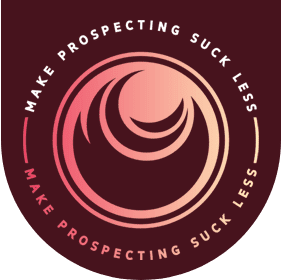
Will Inside Sales Take Over In 2024?
Inside and remote sales teams have become the most popular sales model for B2B, especially in SaaS and many other high-ticket industries. But how do they compare to outside sales, and what will the role look like in 2024?
In past years, inside sales have been considered a backup to outside sales. However, changes in B2B buying preferences have increased the importance of virtual sales in B2B commerce.
There’s no denying that business changed dramatically during 2020. The whole world was quarantined for many months. This forced all executives to do more business virtually, online, and over the phone, permanently changing how business is done worldwide. Also, during this time, new technologies emerged that changed inside sales forever.

7 Inside Sales Advantages
The inside sales model has many advantages over outside sales.
1. Scalability
Remote sales teams can quickly scale and deploy. For most businesses, their stack of sales tools is cloud-based and does not require extensive implementation.
2. Cost-effectiveness & Recruiting
Sales tech is relatively inexpensive. You can equip salespeople with a full stack of tools for about $200 per person monthly, and remote sales representatives’ salaries are very affordable.
You can hire the best talent globally to work remotely, and there are no relocation costs.
Outside sales representatives carry much higher operating expenses with stipends, travel, and entertainment.
3. Coaching
Cloud-based sales tools have made it easier to coach inside salespeople.
An inside sales manager can be fully aware of their team’s playbook and monitor how the team interacts with potential customers. This is not readily achievable when managing a field salesforce.
Conveniently, inside sales are mostly done digitally. Managers now have more tools and coaching opportunities.
This results from better collaboration tools, cloud-based CRM, conversation intelligence, recordings, chat transcripts, and virtual writing assistants.
4. Predictable revenue
Companies can predictably forecast and measure the ROI of an inside salesperson.
This is because inside salespeople should have targeted amounts of work to achieve each week. This can include the number of chats and calls answered, outbound dials, sent emails, meetings booked, sales demos, deals won, etc.
The work is closely tied to lead generation and, in turn, a predictable pipeline of which the value can be calculated.
5. Global expansion
Whether you want to expand your business to new markets or tap into a diverse talent pool, remote sales offer excellent potential for global expansion. It can be done virtually from anywhere in the world.
Since inside sales can be done remotely, companies can quickly onboard new representatives from other countries.
Hiring companies only need to ensure that salespeople have the right equipment and training to use the necessary tools. A global marketplace for hiring can give your business access to better talent at competitive rates.
Companies can also take advantage of international virtual numbers to simulate a local calling presence in the country of their choosing.
6. Specialization
Sales processes can be broken down and assigned to specialized roles. A traditional inside sales process might involve the following:
- Identify target companies that fit your Ideal Customer Profile (ICP) or new clients that fit expansion criteria.
- Identify decision-makers at those target companies: research potential pain points and service use cases.
- Reach out to decision-makers to understand their pain points and spark an interest in your company and how your solutions could be beneficial.
- Demo the effectiveness of your products and services. Work to close the sale.
- Ensure successful onboarding of new customers. Pursue expansion opportunities.
This type of sales method is like an assembly line. An inside sales manager could assign agents or representatives to specialize in each task.
The inside sales representatives become more effective by devoting their full attention to perfecting and performing a specific task.
7. Compatibility
The buyer’s journey in B2B has rapidly changed. Modern buyers prefer virtual meetings, live screenshares, and phone calls over in-person demonstrations and face-to-face meetings. In addition, many companies are still working from home, or at least hybrid.
Corporate travel has become a lot harder since 2020. In 2023, requests for health documents and travel quarantines have not been uncommon. This makes it more difficult for outside sales reps to visit clients on-site, especially in other countries.
Interested prospects prefer to buy and sell primarily online, and most buyers are doing more individual research before deciding. As a result, sales organizations must remain flexible and meet buyers in their preferred mediums.

Running a Smooth Inside Sales Team
Several components are required to run a successful inside sales organization:
- Software
Equip managers with the right tools: CRM, call recordings, conversation intelligence, etc. Similarly, inside salespeople should have the right tools: high-speed data, sales automation tools, calling service with web dialer, writing assistants, etc.
- Specialization with well-defined roles
Inside sales reps are more effective when assigned to specialized roles. For example, your team should have specialized representatives who identify target companies and decision-makers, other representatives who reach out to those decision-makers to spark an interest, and closers who can effectively communicate the value of your services and win deals.
- Align sales and marketing
Marketing and inside sales should be in close contact. It is the job of marketing to create brand awareness and interest and supply salespeople with the proper enablement resources to do their jobs effectively. Ideally, this will ensure prospects know about your business before salespeople reach out.
- Sales Process
The process is critical for a digital sales organization looking to scale. Managers should implement repeatable processes and adequately educate their inside sales teams. This makes it easier to expand the team and, in turn, grow revenue.
5 Top Skills of a High-Performing Inside Salesperson
A typical day in the life of an inside salesperson involves various tasks and responsibilities, with most days spent fielding inquiries, following up with leads or clients, prospecting online, and doing admin work. Depending on the company, the job of an inside salesperson might carry over after hours. Results come from the work that salespeople put in.
These are the most valuable skills that inside salespeople need:
- Active Listening
- Genuine Curiosity
- Consultative Approach
- Rapport Building
- Strong Network
Will Inside Sales Take Over In 2024?
We saw how work shifted from in-office and in-person to fully remote during the pandemic. Video conferencing exploded. Virtual demos and screen sharing also took off. The digital funnel and virtual selling pretty much replaced in-person lunches and dinners. We don’t see it going back.
The Bottom Line: Most changes to remote sales have already happened in 2020 and are here to stay. You can run inside sales from anywhere, making it the preferred sales model in 2024.
